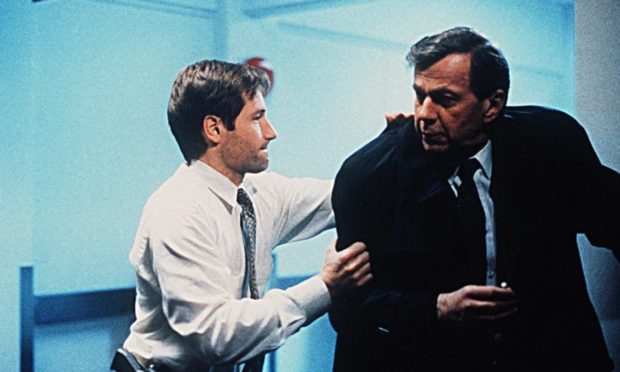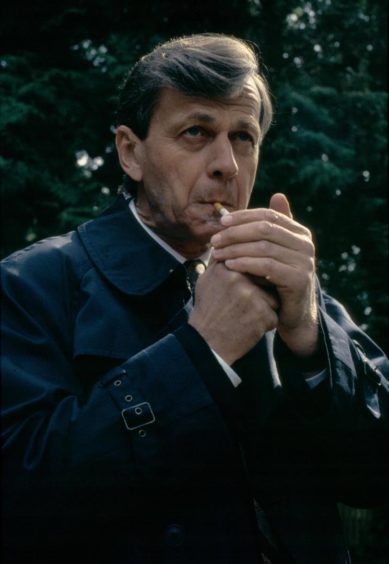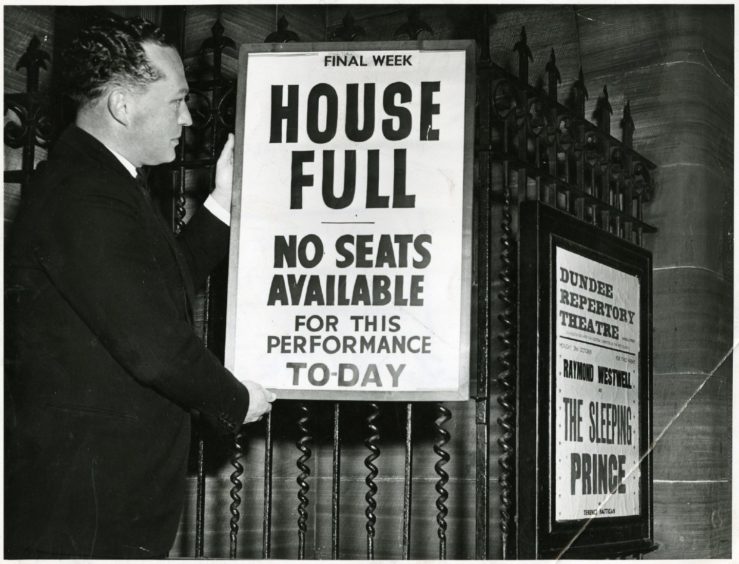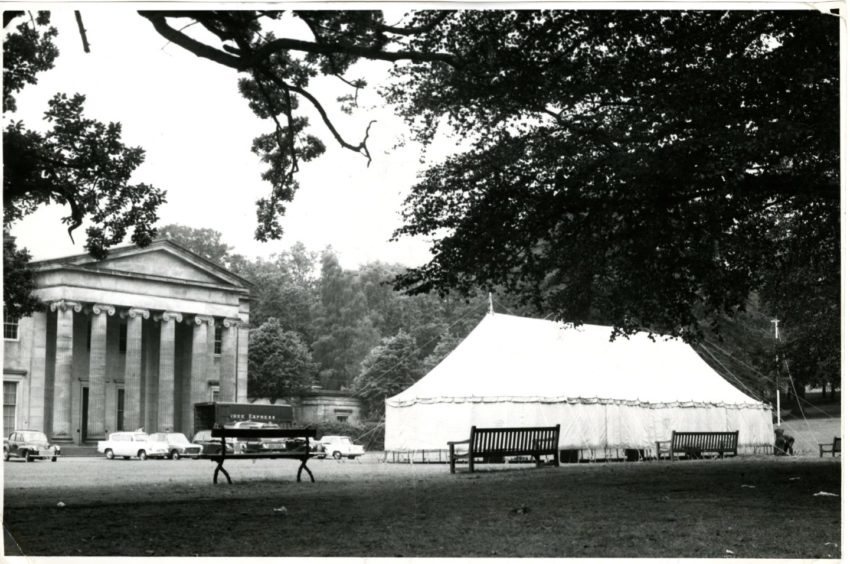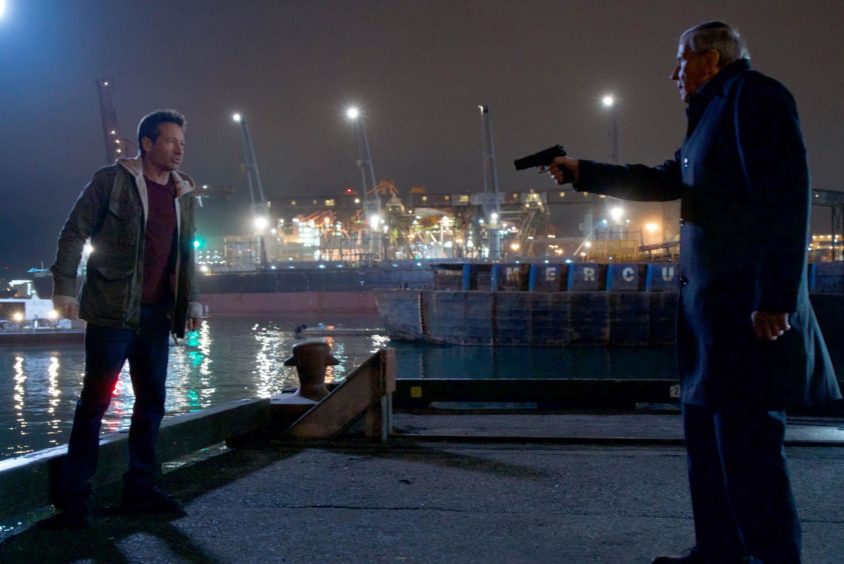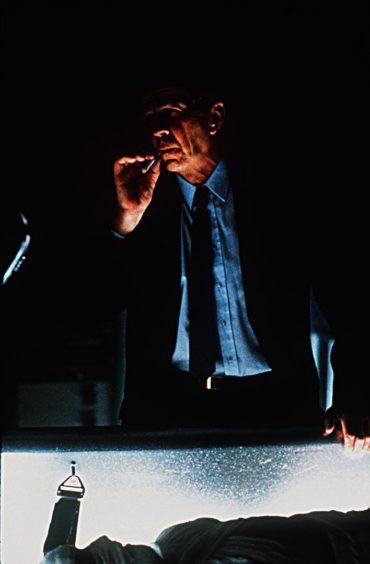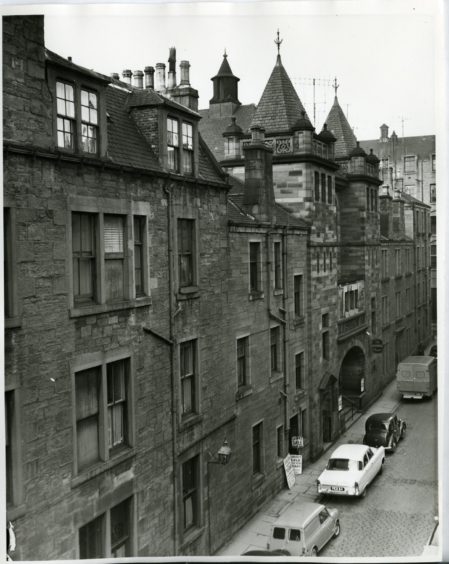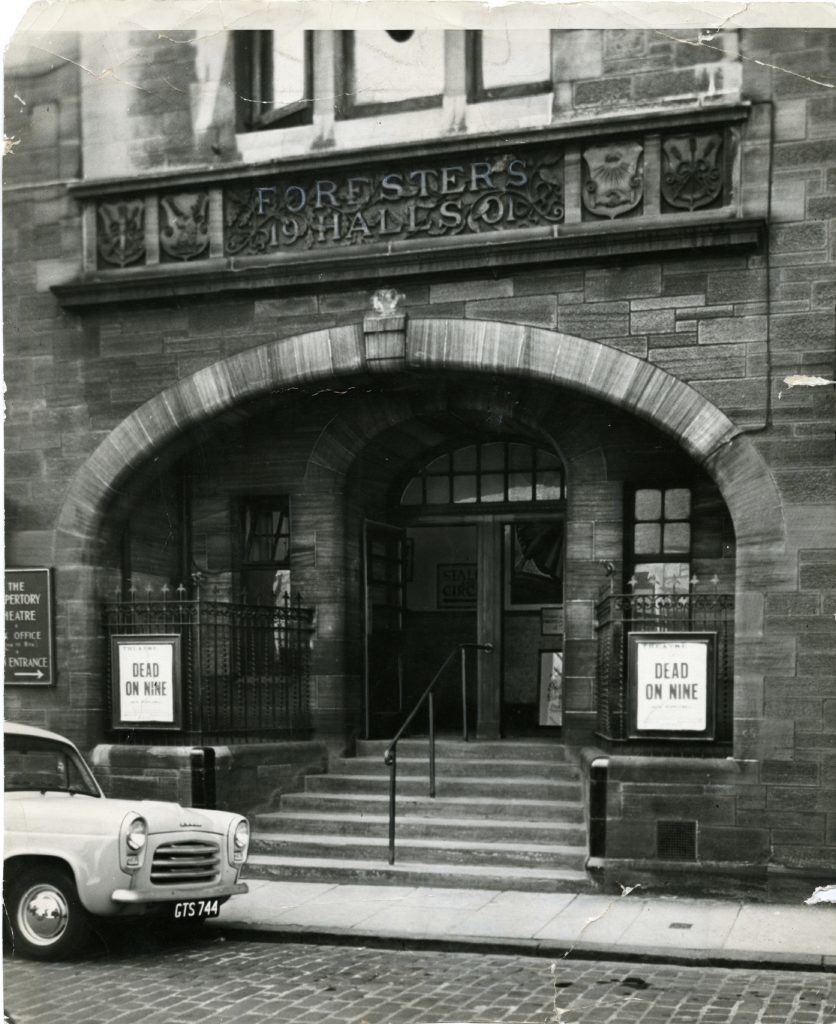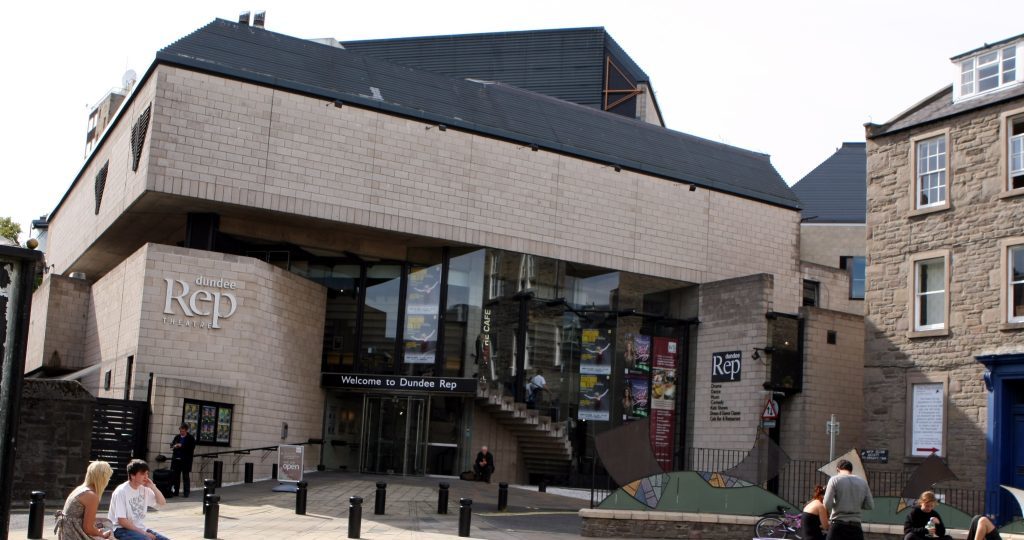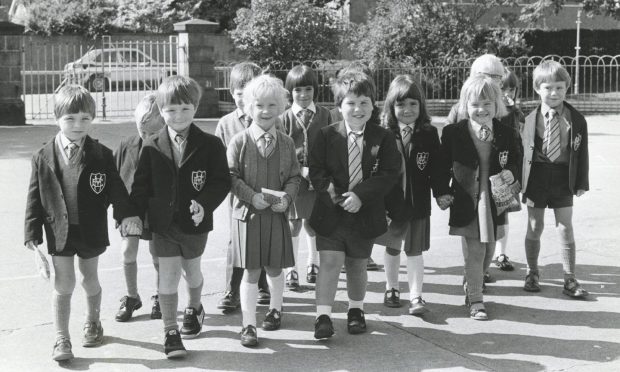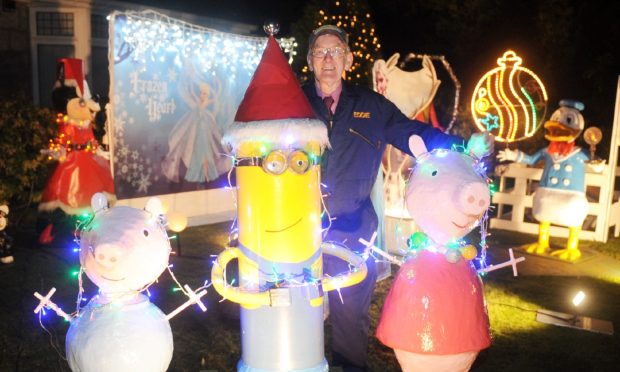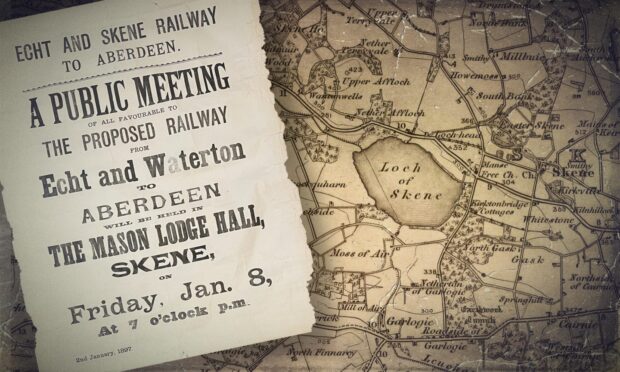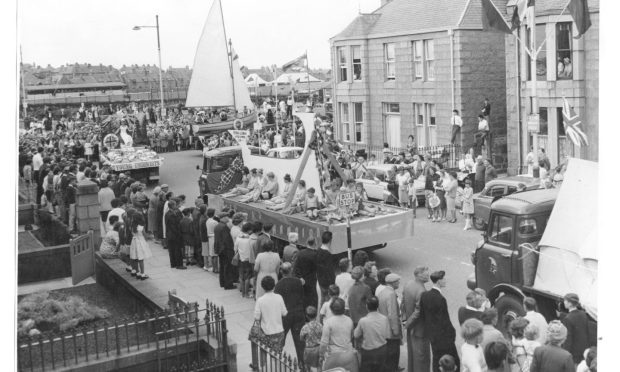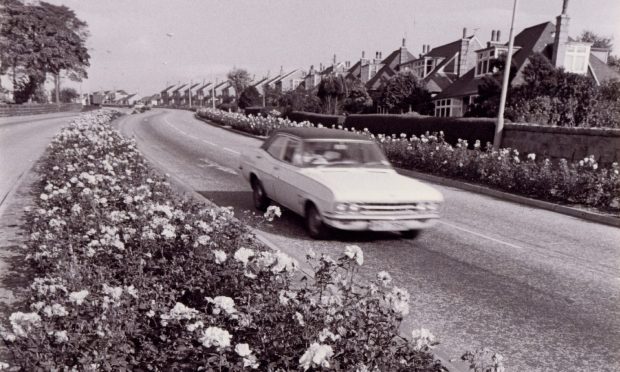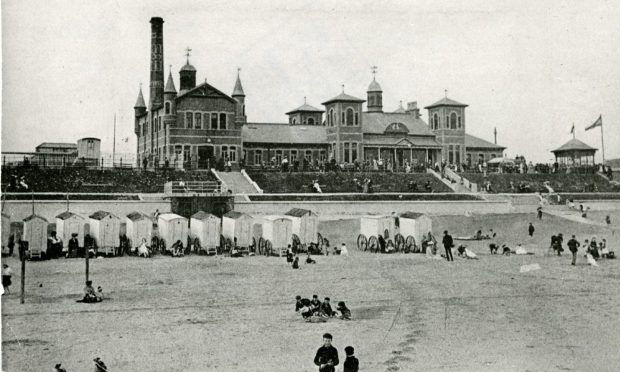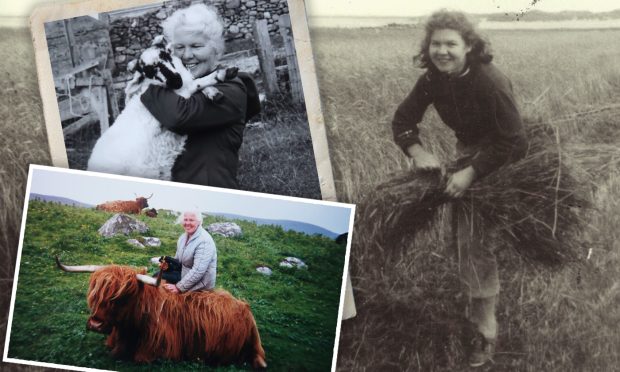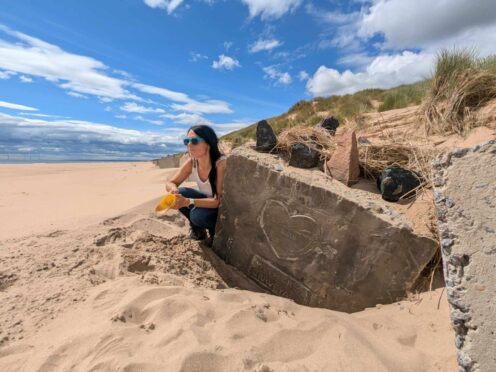William B Davis watched his dreams of success at Dundee Rep turn to ashes before going on to become one of TV’s greatest villains.
The X-Files’ Cigarette Smoking Man was artistic director when Dundee Rep was first located in Forester’s Hall in Nicoll Street and put on 26 productions a year before a fire burned down the building in June 1963.
The blaze signalled the beginning of the end of his time at Dundee Rep where he worked with many actors including Hannah Gordon from Upstairs, Downstairs and 15-year-old apprentice Brian Cox to whom he gradually gave larger and larger acting roles.
Golden age
Davis started acting as a child, working with The Straw Hat Players in Ontario and doing radio drama during the CBC’s golden age in the early fifties.
He weaned himself from acting while at university and embarked on a 20-year career as a theatre director and acting teacher.
In September 1962, along with a company of English actors, he arrived in Chesterfield, to begin a stint as associate director of the Civic Theatre where he worked with Donald Sutherland.
Davis moved to Dundee Rep the following season on the strength of an interview in Edinburgh with general manager Jack Henderson.
He was hired to direct eight of the nine productions that would take the company up to Christmas.
Davis told in his memoirs how he stayed in a house belonging to the theatre electrician when he arrived in Dundee.
He said: “One day when I was going home he said there would be some messages outside the door and would I put them inside for him.
“When I suggested that I could bring them to the theatre when I came back later he looked at me as if I had lost my marbles.
“How was I to know that in Dundee ‘messages’ means groceries?”
Broughty Ferry
He eventually moved to a two-bedroom flat in the upper storey of a house in Broughty Ferry which was freezing in winter and he bought an electric blanket.
He recalled: “By the time winter truly set in my morning routine went something like this: alarm goes, switch on the electric blanket, leap out of bed and switch on the two electric heaters in the room, run to the bathroom and plug in the heater in the bathroom, run down the hall lighting a match and light the fire in the kitchen that had been set the night before, run back to the bedroom and jump back in bed and wait for twenty minutes.”
The heating in Forester’s Hall was no better and the cast often rehearsed wearing five or six layers of clothes to keep warm.
Davis and some of the cast went for lunch at the Chrome Rail in Seagate on the fateful day of the fire.
He started to drive back to the theatre for the afternoon matinee performance but the roads were blocked with smoke and fire appliances everywhere.
He ditched his car and forced his way through the crowd of onlookers.
In his memoirs, Davis said: “The theatre was ablaze, beyond hope of saving, my dreams for now — up in smoke.
“Fortunately no one was hurt, the company being on lunch, and being Saturday the building underneath was unoccupied.”
Camperdown Park
The building was completely destroyed apart from the pictures of the acting company which were still standing in the wreckage of the foyer.
The cast were able to get a temporary location for a few weeks in a local theatre before they mounted two productions in a tent in the city’s Camperdown Park.
An outdoor production of Macbeth at Glamis Castle was cancelled before Davis was relieved of his duties.
He returned to London and spent two years working at the London Academy of Music and Dramatic Art and started to teach at the Guildhall School of Music and Drama.
His last role in the UK was as assistant director at the National Theatre of Britain under the great Laurence Olivier before he returned to Canada in 1965 and began working for the National Theatre School of Canada, where he took the role of artistic director.
He later founded his own acting school in Vancouver – The William Davis Centre For Acting Study – which became a training ground for actors like Xena star Lucy Lawless before he picked up his career-defining role in The X-Files in 1993 as the arch-nemesis of FBI Special Agent Fox Mulder.
When Davis first took the role, the character was written as an extra for the pilot episode.
In just a few scenes of the very first X-Files episode, Davis stands in the background, smoking, while FBI agents are talking.
Real cigarettes
He returned for small cameo appearances during the first season, making increasingly more appearances in the seasons that followed.
Davis used to smoke but when he got the part he hadn’t smoked for 20 years.
He smoked real cigarettes for the first two episodes but soon realised this was dangerous and “switched to herbal cigarettes”.
The Cigarette Smoking Man is involved in the Syndicate, a shadow organisation which includes members of the United States government that exists to hide from the public the fact that aliens are planning to colonise Earth.
Over the years he ruthlessly managed the show’s main alien conspiracy, sacrificing his wife to extra-terrestrial experiments, shooting his own son and repeatedly thwarting Agent Mulder, the show’s hero, who, was later revealed to be his biological son.
The Cigarette Smoking Man is the only character in the series, in addition to Mulder and Scully, to appear in both the first episode and the last of the series.
Kim Manners, a director of several X-Files episodes, said that the Cigarette Smoking Man was the show’s version of Darth Vader, while series creator Chris Carter once called him “the devil”, which produced a mixed reaction among fans.
“I tried to put myself in the character’s shoes and see the world from his point of view,” said Davis.
“After all, villains don’t think they are villains.”
Life and times of Dundee Rep
Dundee Repertory Theatre was born in 1939 when Robert Thornely, manager of the last touring company to perform in Dundee, approached the Dundee Dramatic Society who had been looking for a place to perform and had bought an old jute mill.
The two groups came together, a board of directors was formed, and Forester’s Hall in Nicoll Street, once home to rowdy suffragette meetings, was opened with a production of James Elroy Fleckers Hassan.
But the dreadful fire in 1963 brought the Nicoll Street chapter to an end.
Lochee
The Rep was forced to take up residence in a disused church in Lochee.
The early 1970s witnessed a downturn in arts subsidies.
A much-admired artistic director, James Lovell, died suddenly.
Meanwhile, conditions in the hall deteriorated, the roof falling in during one performance.
Although the Rep soldiered on despite everything, the quality of the product continued to outstrip the facilities available.
It became increasingly apparent that the Rep had to be rehoused.
Negotiations with then Dundee District Council and the Scottish Arts Council saw the decision taken for the company to have its own purpose-built premises on land donated by Dundee University.
After various funding challenges were overcome including £200,000 raised in a public appeal, the new theatre at Tay Square opened on April 8 1982, designed by Dundee-based architects Nicoll Russell Studios.
Further expansion
With a 455-seater auditorium, and regarded as one of the best stages in Scotland in terms of its relationship with its audience, it received a civic commendation from The Civic Trust Award in 1984 and in 1986 won the RIBA Architecture Award.
Further expansion took place in the 1990s and, in September 1999, it opened its doors to a permanent company of actors.
Dundee Rep Ensemble highlights in the years that followed included a pioneering tour of Iran with Shakespeare’s The Winter’s Tale and, in 2007, creation of Sunshine on Leith featuring the music of The Proclaimers.
The Rep has developed co-productions with some of the UK’s other leading producers including the Barbican, the Young Vic, National Theatre of Scotland, Royal Lyceum Theatre, Edinburgh, Traverse Theatre Company, Paines Plough, Birmingham Rep and the Tron Theatre, performing in all of Scotland’s major venues.
